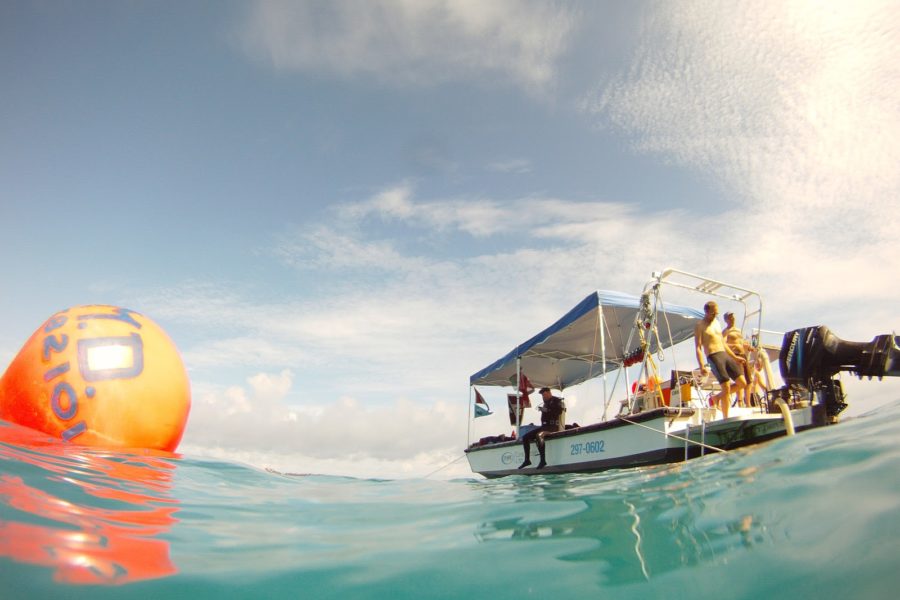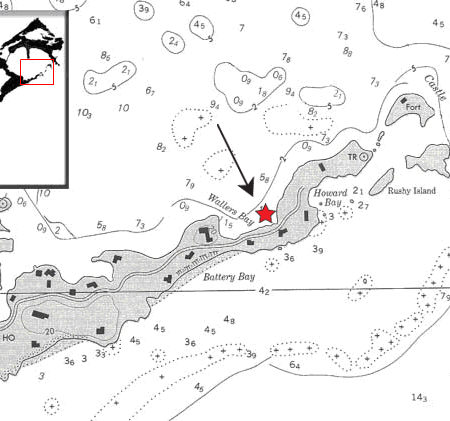On October 20th, 1619, en route to Jamestown Virginia, the magazine ship belonging to Sir Robert Rich, the Earl of Warwick made a scheduled stop in Bermuda. Warwick’s arrival was as an important event for the islands. On that voyage, the ship was charged with delivering Captain Nathaniel Butler, the new Governor of the nascent colony. Apart from delivering Butler, Warwick was to carry supplies and settlers to the struggling colony at Jamestown, and collect colonial products from Bermuda and Virginia for return to England.
Warwick would have looked like Sea Venture painted here by Deryck Foster
While the Warwick was in port, a devastating hurricane wreaked havoc on the islands of Bermuda. Amongst the victims of the tempest, was the Warwick which sank at it anchorage in Castle Harbour
(Introduction courtesy of P. Bojakowski)
Project Goal
Diving archaeologists from the Bermuda Maritime Museum, Texas A&M and the University of Southampton are undertaking a three year project to scientifically excavate the sunken remains of the Warwick.
Project Team
Project Team:
Piotr Bojakowski, Co-Director of the Warwick Project; PhD Candidate in the Nautical Archaeology Program at Texas A&M University, Institute of Nautical Archaeology Research Associate, and Archaeologist/Conservator for the National Museum of Bermuda
Katie Bojakowski Co-Director, Ph.D, Volunteer Archaeologist at the National Museum of Bermuda
Dr. Kevin Crisman of Texas A&M University
Dr. Jon Adams of Southampton University
Dr. Kroum Batchvarov, Ph. D., Institute of Nautical Archaeology
Dr. Edward C. Harris, FI’99 MBE, JP, Ph.D, FSA, Executive Director National Museum of Bermuda
Doug Inglis, Assistant Project Director, Ph.D. student, Texas A&M Nautical Archaeology Program
Rodrigo Torres, Ph.D. Candidate, Texas A&M Nautical Archaeology Program
Mike Gilbart, Project Dive Safety Officer, Masters’s student, Texas A&M Nautical Archaeology Program
Daniel K. Scott, Masters’s student, Texas A&M Nautical Archaeology Program
Maureen Merrigan, Masters’s student, Texas A&M Nautical Archaeology Program
Susana Vallejos, Archaeologist
Leah M. Crisman, Volunteer
James Davidson, Project Marine Engineer
Jason Paterniti, diver
Robert Zuill, Project Videographer & Photographer
Zoe Brady, Volunteer
Aims:
The Warwick is significant not only because it is a prime example of late 16th-century naval warships, but also because it represents an example of an early 17th-century ship that played a fundamental role in supplying the English settlements in North America.
For nautical archaeologists, the Warwick may represent a transitional stage in shipbuilding, a stage that links and explains the gap between the early 16th-century Mary Rose and early 17th-century Sea Venture.
Warwick framing timbers. Photo by P. Bojakowski
From a historical perspective, the Warwick may offer new information on the cargo, personal possession of passengers and crew, and supplies that were shipped to the colonies in the year of 1619 that are often missing from terrestrial archaeological sites.
2011 Objectives
- Excavate the overburden on the midship section (previously unexcavated) of the wreck site.
- To record and map the timbers and artifacts of the midship section of the Warwick using standard recording equipment as well as WEB Program and other 3-D modeling equipment and software.
- Collect wood samples for identification and dendrochronological analyses to properly date the ship structure and potentially discover the geographical provinces of the timbers.





